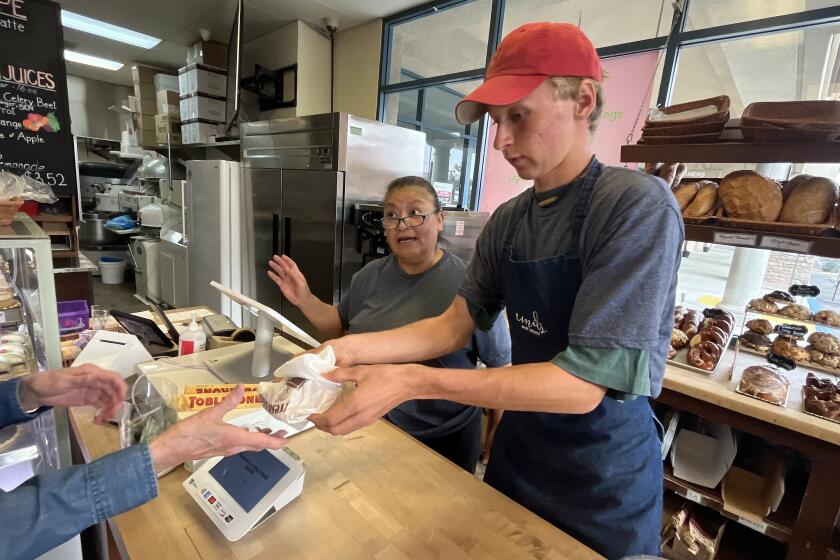They’ve built a house -- now they’ll shake it down
Engineer Andre Filiatrault expects a major earthquake in Buffalo on Tuesday morning -- a temblor as powerful as the 1994 Northridge earthquake that caused $40 billion in damage in Los Angeles.
He hopes his stucco town house can withstand the shock.
In the performance art of earthquake engineering, Filiatrault and his colleagues at the State University of New York at Buffalo plan to subject an entire house to a magnitude-6.7 earthquake Tuesday for a systematic assessment of how a typical wooden suburban home holds up to the rigors of life along the fault line.
The furnished 1,800-square-foot three-bedroom, two-bath home -- complete with a sedan in its two-car garage and crash dummies lounging in the living room -- will be subjected to the most violent shaking possible in a U.S. laboratory. Built to California construction code, the 40-ton building is the largest wooden structure ever tested in a simulated earthquake, the engineers said.
The $1.24-million test is part of a four-year project funded by the National Science Foundation to develop better construction techniques for wooden homes in active seismic zones.
“It is straight from the streets of L.A.,” said civil engineering professor John van de Lindt of Colorado State University, who is overseeing the experiment. “It is quite a feat to get the thing moving. The furniture will fly. It will be almost too realistic.”
The sudden swaying and vibrations will simulate the intensities recorded in the Northridge event, replayed in Buffalo like a set of seismic greatest hits.
The town house, bolted to a concrete slab as it would be in California, was built on the test site by a construction crew from California. The shaking will be provided by two powerful hydraulically driven tables, in place of the mammoth grinding crustal plates that generate Southern California’s tremors.
The tables are programmed to reproduce the ground shaking that occurred at Rinaldi in the San Fernando Valley at 4:30 a.m. Jan. 17, 1994, not far from the quake’s epicenter. Preliminary experiments reproduced the ground motion recorded that day at Canoga Park.
The entire experiment will be broadcast live beginning at 7:30 a.m. PST Tuesday on the laboratory’s website at https://nees.buffalo.edu/projects/NEESWood/video.asp
Seismic tremors and wood-frame housing construction are fixtures of Southern California, and the test will examine the interplay between the two.
During the last week alone, the U.S. Geological Survey recorded 317 earthquakes in the state.
Most were relatively imperceptible, magnitude 4.0 or less -- the geologic expression of a perennially restless landscape that shapes the California character.
The Northridge quake was the first since 1933 to strike directly under an urban area of the United States. It occurred on a previously unsuspected blind thrust fault -- delivering a seismic uppercut to every building in the region -- and produced the strongest ground motions ever recorded in an urban setting in North America.
Almost half of the damage in the 1994 Northridge disaster involved wooden-frame buildings. Twenty-four of the 25 people who died in buildings during the quake were killed inside wood-frame structures, the Buffalo engineers said.
In the 6.9 Hanshin earthquake in Kobe, Japan, the following year, 6,400 people died -- almost all of them in wooden houses -- and economic losses were estimated at $200 billion.
As global urban sprawl spills into active seismic zones, the consequences of even a moderately severe earthquake have escalated dramatically.
“Northridge was a wake-up call,” Filiatrault said.
“Suddenly, the engineering community is more interested in the performance of wood-frame buildings. “
More to Read
Sign up for Essential California
The most important California stories and recommendations in your inbox every morning.
You may occasionally receive promotional content from the Los Angeles Times.










